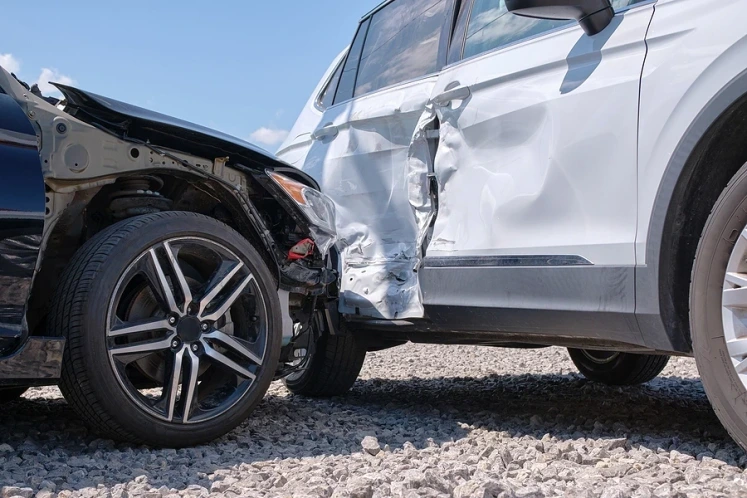How to Document Evidence at the Scene of a Vehicle Accident

Insurance carriers and defense lawyers build arguments on documentation, not memories. Within minutes of a collision, vehicles are towed, skid marks fade, and witnesses scatter. When you capture strong evidence before that happens, you protect your claim and shorten disputes over fault and damages.
Keep safety ahead of documentation
Move to a safe spot if traffic is still flowing. Turn on hazard lights, set out flares or reflectors from your emergency kit, and call 911. Florida law requires drivers to remain at the scene and exchange information. If anyone seems seriously hurt, request an ambulance and follow the dispatcher’s instructions.
Photograph the entire scene first
Start with wide-angle shots that show vehicle positions, traffic signals, street signs, and landmarks. Include at least one image from each compass direction, even if a damaged guardrail or parked car blocks part of the view. Next, take medium-range photos focusing on each vehicle, then move closer for details such as crushed panels, broken glass, or deployed airbags. Crouch to capture skid marks from ground level; the angle highlights length and direction.
Record road and weather conditions
Snap pictures of standing water, potholes, oil slicks, loose gravel, or construction cones. Make sure the timestamp is visible in your phone settings. Include the sky—bright sun, cloud cover, or rain—because glare and precipitation influence braking distance and visibility.
Capture small details that tell a bigger story
Zoom in on license plates, registration stickers, inspection decals, and company logos on commercial trucks. Photograph the inside of your car: speedometer position, airbag deployment, seatbelt cuts, or items scattered by impact. If debris punctured the windshield, show both the exterior and interior damage.
Film a 360-degree video walkthrough
A steady walk around the scene provides context still photos can miss. Narrate briefly: note lane designations, turn arrows, or missing signage. Keep commentary factual—avoid assigning blame or speculating about speed.
Collect digital statements from witnesses
Ask bystanders for permission to record a short voice or video statement on your phone. Have them spell their name and give a contact number. Prompt with open questions: “Where were you standing?” or “What did you see immediately before impact?” Authentic voices captured minutes after the crash carry weight if memories fade months later.
Secure official information
Exchange names, phone numbers, driver’s license numbers, and insurance details with every involved driver. Photograph each person’s proof of insurance to avoid transcription errors. When law-enforcement officers arrive, request the agency name and crash report number—this reference speeds later retrieval.
Use written notes to supplement images
If your phone battery runs low or lighting worsens, jot important facts in a pocket notebook:
– Exact time of collision (check your phone clock for accuracy)
– Direction of travel for each vehicle
– Estimated speed limits on the road
– Statements made by other drivers, such as admissions of distraction or fatigue
Date and sign each page; contemporaneous notes are hard to challenge in court.
Save location data automatically
Most smartphones embed GPS coordinates in photo metadata. Keep location tags enabled. These digital breadcrumbs prove where pictures were taken, countering claims they came from another crash or different day.
Preserve physical evidence
Do not wash clothing stained with blood or vehicle fluids. Store torn fabric or broken eyeglasses in sealed plastic bags. Place loose vehicle parts—side-view mirrors, trim pieces, reflectors—in a box. These items can be examined by reconstruction experts who establish impact angles and force.
Avoid common documentation missteps
– Do not post images or comments about the crash on social media. Insurers scour profiles for contradictions.
– Do not sign repair authorizations or release forms at the scene. Wait until you understand the full scope of property and injury claims.
– Do not argue with other drivers or apologize. Stick to factual exchanges and let the evidence speak.
Organize files as soon as possible
Create a dedicated folder on your phone or cloud storage titled with the crash date, such as “2025-05-22 Fort Myers Wreck.” Move all photos, videos, voice notes, and PDFs of medical bills into subfolders labeled Scene, Vehicle, Injuries, and Expenses. Consistent labeling prevents accidental deletions and helps your attorney prepare a demand package quickly.
Back up data in two locations
Upload to a trusted cloud service and also transfer copies to a laptop or external drive. Include original files, not compressed versions, so pixel quality remains intact for zooming and printing.
Follow up with supporting documents
Within twenty-four hours, photograph bruises and swelling again—they often darken overnight. Keep a daily pain log noting activities you can’t perform, medications taken, and any therapy sessions. Scan medical records and receipts as they arrive. The stronger your paper trail, the harder it is for the defense to downplay injury severity.
Share evidence only with trusted professionals
Provide complete sets to your lawyer and treating physicians. When the insurance adjuster requests documentation, channel everything through your attorney. Selective disclosure can lead to accusations of hiding information; full but controlled release avoids surprises while protecting strategic details.
Understand how Florida laws intersect with your evidence
Florida’s modified comparative negligence rule now bars recovery if you are found more than fifty percent at fault. Meticulous evidence helps place liability where it belongs. Under state no-fault rules, personal injury protection covers immediate medical costs, yet serious injuries allow claims against the at-fault driver. Timely, organized proof speeds that transition and supports higher compensation for pain and suffering.
Act promptly to avoid spoliation claims
Opposing counsel may argue evidence was lost or altered if substantial time passes without disclosure. By collecting data at the scene, backing it up, and maintaining an unbroken chain of custody, you counter spoliation arguments and maintain credibility.
When professional investigators become essential
Complex collisions involving multiple vehicles, commercial trucks, or suspected mechanical failures often require accident reconstruction specialists. Your attorney may call them in within days. Early photographs and preserved parts enable these experts to create accurate 3-D models, momentum calculations, and visibility studies.
Conclusion
Evidence fades, but disciplined collection habits preserve facts that win cases. A calm, deliberate approach—photos first, safety always—turns a chaotic crash scene into a clear record of what happened. By following the steps above, you give yourself and your legal team the tools needed to pursue full and fair compensation while focusing on healing and moving forward.
John Pape is the Managing Partner at Weston & Pape and has more than 30 years of experience representing injured clients across Florida. A summa cum laude graduate of the University of Miami School of Law, he has devoted his entire career to personal injury cases, including motor-vehicle accidents, wrongful death, and nursing-home neglect. Recognized by Verdict7, The National Trial Lawyers Top 100, and Premier Lawyers of America, John is known for his thorough preparation and commitment to achieving meaningful results for his clients.

 Call Us Today - It's Free
Call Us Today - It's Free